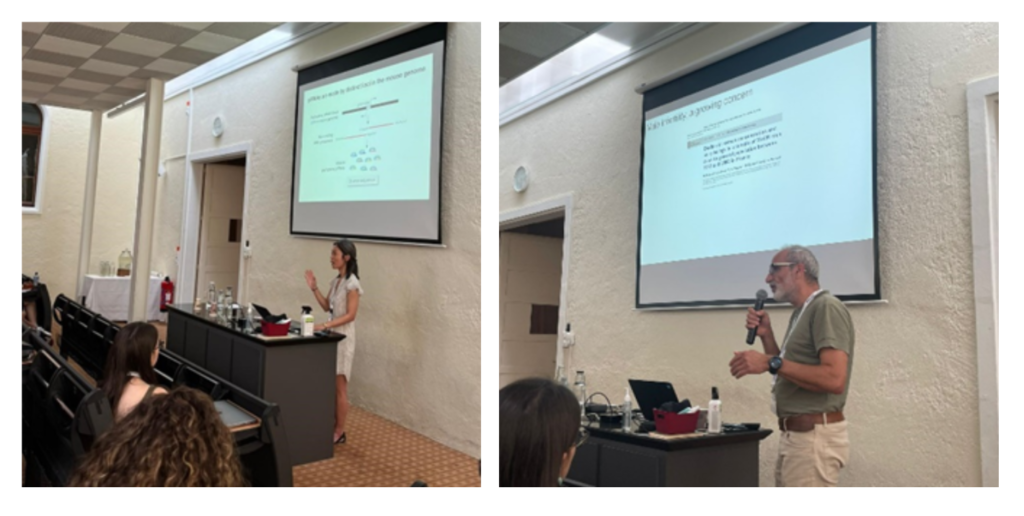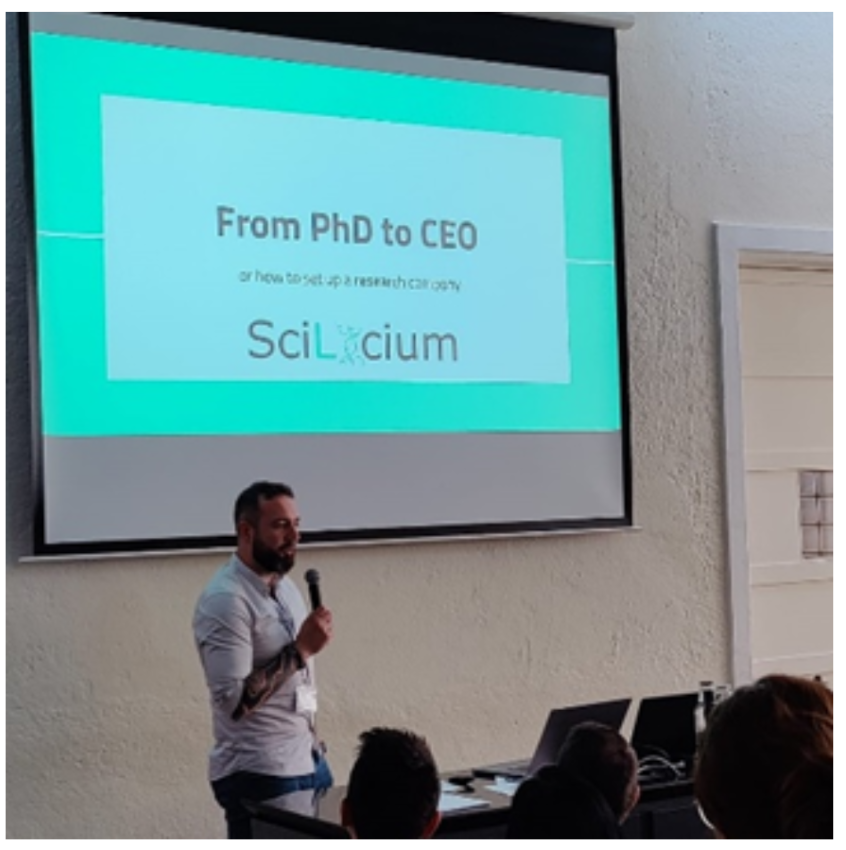The 15th NYRA meeting preceded the 22nd European Testis Workshop, held from June 17th to June 18th, 2023 in Montreux, Switzerland. The meeting venue was the historic Palace de Caux, a former palace hotel in the village of Caux, above Montreux on the Swiss Riviera. The event had 65 participants from various countries, including Algeria, Australia, Belgium, Croatia, Czech Republic, Denmark, Finland, France, Germany, Netherlands, Poland, Spain, Serbia, Turkey, and the United Kingdom. Here are the main take-home messages from the meeting:
Professor Pei-Hsuan (Xuan) Wu (Genetic Medicine and Development, University of Geneva, Switzerland) delivered the inaugural plenary lecture entitled “PIWI-interacting RNAs in mammalian reproduction“. Pei-Hsuan provided us with an insight into a type of non-coding RNA known as piRNAs and their corresponding precursors in mice. Specifically, the role of specific piRNA clusters was discussed, particularly the pi6 cluster in male fertility, via their roles in sperm production and function.

Professor Christophe Arnoult (Institute for Advanced Biosciences, University of Grenoble Alpes, France) delivered a lecture entitled “In search of (bio)molecules that improve sperm physiology”. Christophe presented very promising scientific studies on sperm functionality, identifying sperm proteins of interest as targets for biomolecules. Moreover, he discussed the efficacy of targeting these sperm-specific proteins to improve assisted reproductive technologies.
Professor Jan-Bernd Stukenborg (NORDFERTIL Research Lab Stockholm, Childhood Cancer Research Unit, Department of Women’s and Children’s Health, Karolinska Institutet, Sweden) shifted the focus from sperm physiology to the production of mini-testes in Petri dishes. During his lecture, titled “In vitro spermatogenesis – From mission impossible to mission incomplete”, he discussed the advancements made in the development of testicular organoids, which aims to create a physiological milieu capable of supporting in vitro spermatogenesis. Notably, the important role of Sertoli cells in supporting this complex process was highlighted.
The final plenary lecture delivered by Professor Brett Nixon (Priority Research Centre for Reproductive Science, School of Environmental and Life Sciences, The University of Newcastle, Australia) with the title “What makes the best swimmers”, provided insights into reproductive strategies and fertility across various species, with a focus on epididymal sperm maturation. Reptiles, birds and monotremes such as the platypus displayed distinct differences in sperm structure and sperm maturation compared to eutherians and humans. For example, reptiles such as female snakes are able to store functional sperm for up to 5 years and get pregnant later. Moreover the lecture showcased adaptations of platypus sperm, which form bundles inside the female reproductive tract system to bolster their motility and aid in ascension of the oviduct.
As a traditional NYRA activity, the board arranged a workshop to showcase a research company start-up. We were delighted to host Thomas Darde, PhD, previous NYRA board member and CEO and founder of SciLicium (France), who told us more on how to start a company after your thesis. He shared his pathway from academia to the establishment of SciLicium, discussing the challenges of starting up a company from scratch, becoming a leader with coworkers, and how to use a skill set acquired throughout his academic career and PhD-studies.

One of NYRA’s popular and best networking activities is the “scientific speed-dating” event. With a doubling of NYRA participants compared with last year, to 65 participants, it was a fantastic and amazing experience to connect NYRA members. The board instructed the attendees to randomly disperse across the courtyard, allowing them just 4 minutes to briefly describe their research and career stage to one other person, before promptly moving to the next new face. Overall, each person spoke to 10 others through this event, removing the barriers for new collaborations or discussions to take place.

Finally, the latest NYRA achievement is its merger with the European Academy of Andrology (EAA), assuming the role of the “young arm of the EAA” while maintaining its independent role. It was with greatest pleasure for us to announce this merger with the audience, emphasizing how it will benefit young researchers, including trainees, in the andrology field. We are very excited for this huge step and believe that this merger will create excellent opportunities for young researchers in andrology! This membership fee is open to young researchers or clinicians coursing a MSc or PhD degree or during the three first years of post-doc, and who have subscribed to NYRA (if you have received this newsletter, it means you already subscribed!). The duration of the NYRA-EAA membership fee is limited to 5 years. Further information on NYRA-EAA memberships can be accessed via the EAA’s homepage: https://www.andrologyacademy.net/membership.
The NYRA board would like to thank all of our invited speakers and participants for attending this meeting! Also, we would like to thank our sponsors; the 15th NYRA meeting was made possible thanks to support from the European Academy of Andrology (EAA), European Molecular Biology Organization (EMBO), The Company of Biologists, International Society of Andrology (ISA), Male Contraceptive Initiative (MCI), Reproduction.MS, SciLicium, and the 22nd European Testis Workshop (ETW). We look forward to seeing you all in our next meeting in 2024 in Brussels, Belgium!


